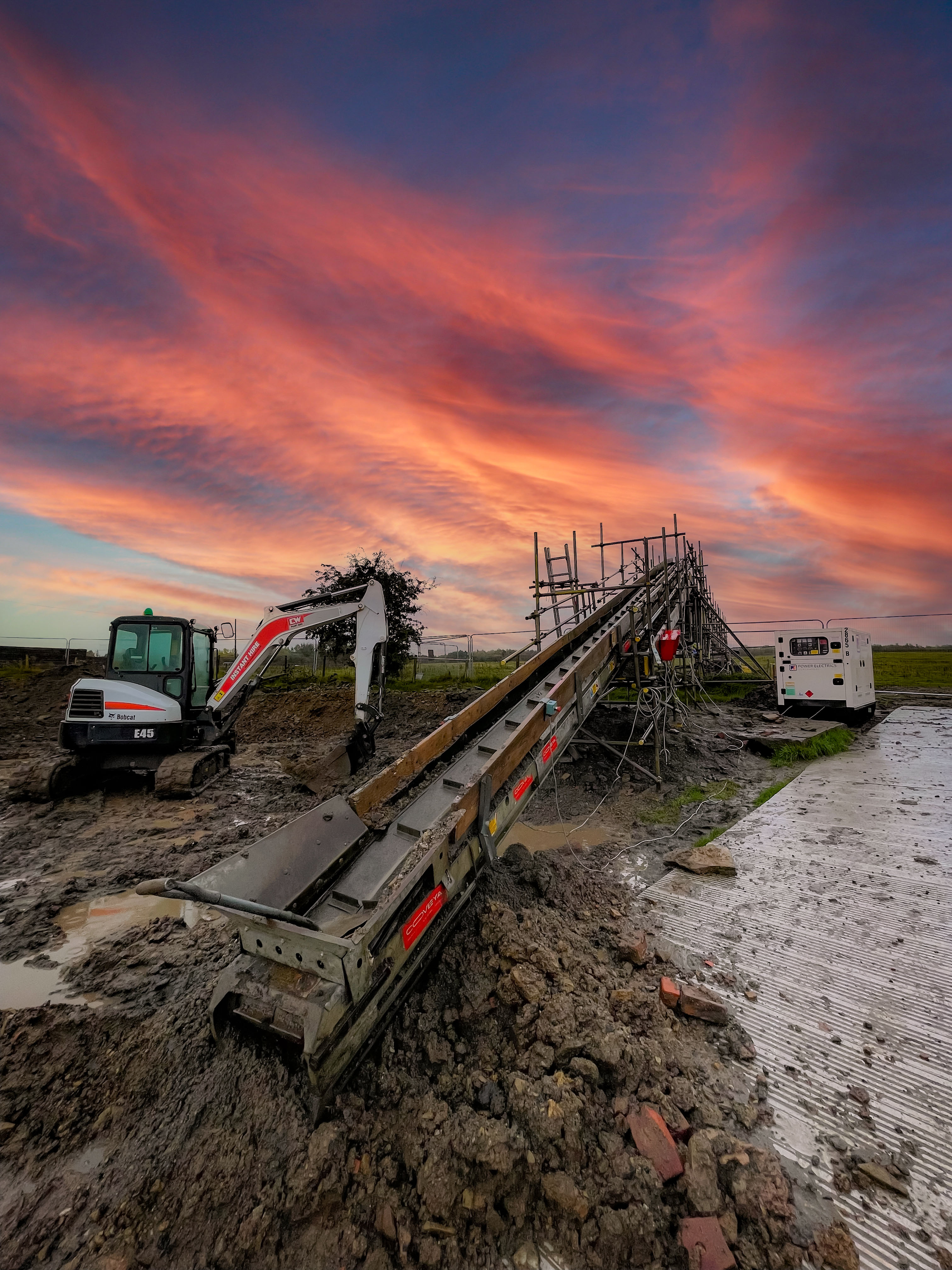- Amanda
- September 9, 2020
Aggregates in the UK

The UK aggregates industry continues to be an important producer with over 201 million tonnes of minerals being extracted ready for sale during 2018.
128.6 million tonnes came from crushed rock, primarily for the construction industry; 57.5 million tonnes were other construction materials; 11.7 million tonnes were industrial minerals, 2.6 million tonnes were attributed to coal and finally, 1.1 million tonnes from oil and gas. *[source Minerals UK].
So with aggregates including sand, crushed or broken stone, gravel, slag, boiler ashes, burned shale or burned clay being mixed with cement, bitumen, lime and gypsum to create concrete and mortar for construction, aggregates play a critical role, not only within the building industry but for rail, infrastructure, and energy. So how can conveyors play their part in the aggregates story?
It’s important to safely transport aggregates across and from a site so that it can move onto the next stage of the process and both conveyors and stockpilers efficiently move aggregate materials including ballast, even if it’s at an incline. So from aggregate plants to rail improvement projects conveyors offer a practical and flexible way of moving aggregate material, increasing productivity.
They also help to control material throughput ensuring a continuous flow of materials, reducing operator time and costs. Conveyors also provide the safest material movement solution, reducing the need for wheeled plant equipment that can be a safety concern.
Conveyors for the Aggregates and Concrete Industry
To find out more about our range of conveyors for the aggregates and concrete industries (steel fibre movement into ready mix concrete) click here.You can also give us a call on 0800 915 9195 or email sales@coveya.co.uk.


